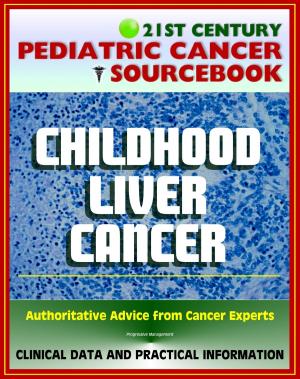Changing Course: Preventing Gang Membership - Juvenile Crime, Youth Violence, Delinquency, Substance Abuse, Public Health Interventions, Homeboys, Girls and Gangs, Race and Ethnicity, Poverty
Nonfiction, Social & Cultural Studies, True Crime, Social Science| Author: | Progressive Management | ISBN: | 9781310118647 |
| Publisher: | Progressive Management | Publication: | November 29, 2013 |
| Imprint: | Smashwords Edition | Language: | English |
| Author: | Progressive Management |
| ISBN: | 9781310118647 |
| Publisher: | Progressive Management |
| Publication: | November 29, 2013 |
| Imprint: | Smashwords Edition |
| Language: | English |
The goal of this book is to provide practitioners and policymakers with knowledge about why kids become involved in gangs and to offer effective and promising strategies that prevent them from doing so.
Topics covered include: Why Is Gang-Membership Prevention Important? * The Attraction of Gangs: How Can We Reduce It? * What Is the Role of Public Health in Gang-Membership Prevention? * What Is the Role of Police in Preventing Gang Membership? * How Should We Identify and Intervene With Youth at Risk of Joining Gangs? * What Should Be Done in the Family to Prevent Gang Membership? * What Can Schools Do to Help Prevent Gang-Joining? * What Should Be Done in the Community to Prevent Gang-Joining? * How Can We Prevent Girls From Joining Gangs? * Race and Ethnicity: What Are Their Roles in Gang Membership? * Program Evaluation: How Do We Know If We Are Preventing Gang Membership?
Girls and gangs; race and ethnicity; homeboys; homegirls; homies; sexual abuse; youth violence; juvenile crime; economics and gangs; poverty; child abuse; support and belonging; outlaw mentality; juvenile delinquency; public health interventions; STRYVE; SARA model; police and gangs; at-risk youth; boys and girls club; cognitive impairment; acting-out; family, early childhood, and adolescent risk factors; social services; machismo; marianismo; substance abuse; female intervention team (FIT).
Youth gang membership is a serious and persistent problem in the United States. One in three local law enforcement agencies report youth gang problems in their jurisdictions. One in four high school freshmen report gangs in their schools.2 Limited resources at the national, state, tribal and local levels make it more important than ever that we make full use of the best available evidence and clearly demonstrate the benefit of strategies to prevent gang-joining.
In acknowledgment of these realities, the Centers for Disease Control and Prevention (CDC) and the National Institute of Justice (NIJ) formed a partnership to publish this book. It is critical that those who make decisions about resources — as well as those who work directly with youth, like teachers and police officers, community services providers and emergency department physicians — understand what the research evidence shows about how to prevent kids from joining gangs. The NIJ-CDC partnership drew on each agency's distinctive strengths: NIJ's commitment to enhancing justice and increasing public safety is matched by CDC's dedication to health promotion and prevention of violence, injury and disability. By combining perspectives, lessons and evidence from public safety and public health, NIJ and CDC provide new insights into the complex problems of gangs and gang membership.
Public health and public safety workers who respond to gang problems know that after-the-fact efforts are not enough. An emergency department doctor who treats gang-related gunshot wounds or a police officer who must tell a mother that her son has been killed in a drive-by shooting are likely to stress the need for prevention — and the complementary roles that public health and law enforcement must play — in stopping violence before it starts. Given our shared commitment to informing policy and practice with the best available evidence of what works, CDC and NIJ brought together some of the nation's top public health and criminal justice researchers to present core principles for gang-membership prevention.
The goal of this book is to provide practitioners and policymakers with knowledge about why kids become involved in gangs and to offer effective and promising strategies that prevent them from doing so.
Topics covered include: Why Is Gang-Membership Prevention Important? * The Attraction of Gangs: How Can We Reduce It? * What Is the Role of Public Health in Gang-Membership Prevention? * What Is the Role of Police in Preventing Gang Membership? * How Should We Identify and Intervene With Youth at Risk of Joining Gangs? * What Should Be Done in the Family to Prevent Gang Membership? * What Can Schools Do to Help Prevent Gang-Joining? * What Should Be Done in the Community to Prevent Gang-Joining? * How Can We Prevent Girls From Joining Gangs? * Race and Ethnicity: What Are Their Roles in Gang Membership? * Program Evaluation: How Do We Know If We Are Preventing Gang Membership?
Girls and gangs; race and ethnicity; homeboys; homegirls; homies; sexual abuse; youth violence; juvenile crime; economics and gangs; poverty; child abuse; support and belonging; outlaw mentality; juvenile delinquency; public health interventions; STRYVE; SARA model; police and gangs; at-risk youth; boys and girls club; cognitive impairment; acting-out; family, early childhood, and adolescent risk factors; social services; machismo; marianismo; substance abuse; female intervention team (FIT).
Youth gang membership is a serious and persistent problem in the United States. One in three local law enforcement agencies report youth gang problems in their jurisdictions. One in four high school freshmen report gangs in their schools.2 Limited resources at the national, state, tribal and local levels make it more important than ever that we make full use of the best available evidence and clearly demonstrate the benefit of strategies to prevent gang-joining.
In acknowledgment of these realities, the Centers for Disease Control and Prevention (CDC) and the National Institute of Justice (NIJ) formed a partnership to publish this book. It is critical that those who make decisions about resources — as well as those who work directly with youth, like teachers and police officers, community services providers and emergency department physicians — understand what the research evidence shows about how to prevent kids from joining gangs. The NIJ-CDC partnership drew on each agency's distinctive strengths: NIJ's commitment to enhancing justice and increasing public safety is matched by CDC's dedication to health promotion and prevention of violence, injury and disability. By combining perspectives, lessons and evidence from public safety and public health, NIJ and CDC provide new insights into the complex problems of gangs and gang membership.
Public health and public safety workers who respond to gang problems know that after-the-fact efforts are not enough. An emergency department doctor who treats gang-related gunshot wounds or a police officer who must tell a mother that her son has been killed in a drive-by shooting are likely to stress the need for prevention — and the complementary roles that public health and law enforcement must play — in stopping violence before it starts. Given our shared commitment to informing policy and practice with the best available evidence of what works, CDC and NIJ brought together some of the nation's top public health and criminal justice researchers to present core principles for gang-membership prevention.















